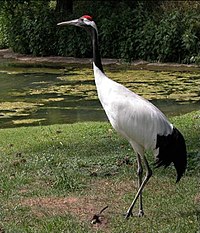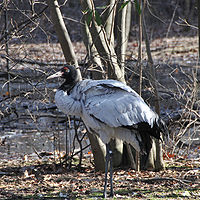Superregnum: Eukaryota
Cladus: Unikonta
Cladus: Opisthokonta
Cladus: Holozoa
Regnum: Animalia
Subregnum: Eumetazoa
Cladus: Bilateria
Cladus: Nephrozoa
Superphylum: Deuterostomia
Phylum: Chordata
Subphylum: Vertebrata
Infraphylum: Gnathostomata
Megaclassis: Osteichthyes
Cladus: Sarcopterygii
Cladus: Rhipidistia
Cladus: Tetrapodomorpha
Cladus: Eotetrapodiformes
Cladus: Elpistostegalia
Superclassis: Tetrapoda
Cladus: Reptiliomorpha
Cladus: Amniota
Classis: Reptilia
Cladus: Eureptilia
Cladus: Romeriida
Subclassis: Diapsida
Cladus: Sauria
Infraclassis: Archosauromorpha
Cladus: Crurotarsi
Divisio: Archosauria
Cladus: Avemetatarsalia
Cladus: Ornithodira
Subtaxon: Dinosauromorpha
Cladus: Dinosauriformes
Cladus: Dracohors
Cladus: Dinosauria
Ordo: Saurischia
Cladus: Eusaurischia
Subordo: Theropoda
Cladus: Neotheropoda
Cladus: Averostra
Cladus: Tetanurae
Cladus: Avetheropoda
Cladus: Coelurosauria
Cladus: Tyrannoraptora
Cladus: Maniraptoromorpha
Cladus: Maniraptoriformes
Cladus: Maniraptora
Cladus: Pennaraptora
Cladus: Paraves
Cladus: Eumaniraptora
Cladus: Avialae
Infraclassis: Aves
Cladus: Euavialae
Cladus: Avebrevicauda
Cladus: Pygostylia
Cladus: Ornithothoraces
Cladus: Ornithuromorpha
Cladus: Carinatae
Parvclassis: Neornithes
Cohors: Neognathae
Cladus: Neoaves
Ordo: Gruiformes
Familia: Gruidae
Subfamilia: Gruinae
Genus: Grus
Species: G. americana – G. carunculata – G. grus – G. japonensis – G. monacha – G. nigricollis – G. paradisea – G. virgo – †G. primigenia
Name
Grus Brisson, 1760
Typus: Ardea grus Linnaeus, 1758 = Grus grus
Synonyms
Anthropoides Vieillot, 1816
Bugeranus Gloger, 1842
References
Primary references
Brisson, M.J. 1760. Ornithologie ou méthode contenant la division des oiseaux en ordres, sections, genres, especes & leurs variétés. A laquelle on a joint une description exacte de chaque espece, avec les citations des auteurs qui en ont traité, les noms qu'ils leur ont donnés, ceux que leur ont donnés les différentes nations, & les noms vulgaires. Ouvrage enrichi de figures en taille-douce. Tome V. pp. [1–3], 1–544, j–lv [= 1–55], [1], Pl. I–XLII [= 1–42]. Paris. (Bauche). p. 375. Reference page.
Additional references
Krajewski, C., Sipiorski, J. T., & Anderson, F. E. (2010). Complete Mitochondrial Genome Sequences and the Phylogeny of Cranes (Gruiformes: Gruidae). Auk 127: 440–452.
Vernacular names
English: Cranes
français: Grues
日本語: ツル属
한국어: 두루미속
中文: 鹤属
Grus is a genus of large birds in the crane family.
The genus Grus was erected by the French zoologist Mathurin Jacques Brisson in 1760.[1] The name Grus is the Latin word for "crane".[2] The German ornithologist Peter Simon Pallas was sometimes credited with erecting the genus in 1766[3] but the International Commission on Zoological Nomenclature ruled in 1956 that Brisson should have priority.[4]
The genus formerly included additional species. A molecular phylogenetic study published in 2010 found that the genus Grus, as then defined, was polyphyletic.[5] In the resulting rearrangement to create monophyletic genera, the sandhill crane, the white-naped crane, the sarus crane and the brolga were moved to the resurrected genus Antigone that had been erected by the German naturalist Ludwig Reichenbach in 1853.[6][7] The Siberian crane was moved to the resurrected monotypic genus Leucogeranus.[6]
Species
The genus contains eight species:[6]
| Image | Scientific name | Common Name | Distribution |
|---|---|---|---|
 |
Grus carunculata | Wattled crane | Africa, south of the Sahara Desert. |
 |
Grus paradisea | Blue crane | Southern Africa |
 |
Grus virgo | Demoiselle crane | Central Eurasia, ranging from the Black Sea to Mongolia and northeastern China. There is also a small breeding population in Turkey. |
 |
Grus japonensis | Red-crowned crane | Siberia (eastern Russia), northeastern China, Hokkaidō (northern Japan), the Korean Peninsula, and occasionally in northeastern Mongolia. |
 |
Grus americana | Whooping crane | North America |
 |
Grus grus | Common crane | Europe |
 |
Grus monacha | Hooded crane | South-central and south-eastern Siberia, Mongolia, China. |
 |
Grus nigricollis | Black-necked crane | The Tibetan Plateau and remote parts of India and Bhutan. |
The HBW/BirdLife and Clements checklists place the demoiselle crane and blue crane in the genus Anthropoides, and the wattled crane in the monospecific genus Bugeranus, leaving only the red-crowned, whooping, common, hooded, and black-necked cranes in the genus Grus.[8][9][10][11]
The Cuban flightless crane, Grus cubensis, became extinct in the Pleistocene.[12]
Fossil record
The fossil record of the genus stretches back some 12 million years or so. A considerable number of prehistoric species are known, with the oldest, Grus miocaenicus (Middle Miocene of Credinţa, Romania) perhaps not a crane but a junior synonym of the swimming-flamingo Palaelodus ambiguus; ("Grus" problematica certainly is). The Late Pleistocene Mediterranean Grus primigenia was hunted by Stone Age humans.
Grus afghana (Late Miocene of Molayan, Afghanistan) - doubtfully distinct from G. penteleci
Grus sp. 1 (Late Miocene of Love Bone Bed, USA)
Grus sp. 2 (Late Miocene of Love Bone Bed, USA)
Grus cf. antigone (Late Miocene/Early Pliocene of Lee Creek Mine, USA)
Grus nannodes (Late Miocene/Early Pliocene -? Edson Middle Pliocene of Sherman County, USA)
Grus sp. (Late Miocene/Early Pliocene of Lee Creek Mine, USA)
Grus haydeni (Late Miocene/Early Pliocene - Pleistocene? of WC USA) - 2 species, one may be same as G. canadensis
Grus penteleci (Late Miocene - Early Pliocene of C and SE Europe) - formerly in Pliogrus
Grus sp. (Late Pliocene of Puebla de Valverde, Spain)
Grus bogatshevi (Late Pleistocene of Azerbaijan) - doubtfully distinct form G. primigenia
Grus latipes (Shore Hills Late Pleistocene of Bermuda, W Atlantic) - formerly Baeopteryx
Maltese crane Grus melitensis (Late Pleistocene of Malta) - doubtfully distinct from G. primigenia
Grus pagei (Late Pleistocene of Rancho La Brea)
Grus primigenia (Late Pleistocene? of SW Europe)
Grus cubensis (Pleistocene and Holocene of Cuba)
Several other fossil gruiforms are now considered not to belong here. "Grus" prentici is now in Paragrus, "Grus" princeps, "Grus" excelsa and "Grus" hordwellianus are placed in Palaeogrus, and "Grus" excelsa in Balearica. "Grus" marshi belongs in Aletornis.
More uncertain is the position of Probalearica (variously considered Late Oligocene to Middle Pliocene but probably Late Miocene) from Golboçica (Moldavia) and maybe elsewhere. It is usually regarded a nomen dubium but might belong into Grus. "Grus" conferta (Late Miocene/Early Pliocene of Contra Costa County, USA) is apparently too different from the modern genus to be placed herein, but its affiliations are not well resolved.
References
Brisson, Mathurin Jacques (1760). Ornithologie, ou, Méthode contenant la division des oiseaux en ordres, sections, genres, especes & leurs variétés (in French and Latin). Vol. 5. Paris: Jean-Baptiste Bauche. pp. 374–375.
Jobling, James A. (2010). The Helm Dictionary of Scientific Bird Names. London: Christopher Helm. p. 179. ISBN 978-1-4081-2501-4.
Peters, James Lee, ed. (1934). Check-list of Birds of the World. Vol. 2. Cambridge, Massachusetts: Harvard University Press. p. 150.
Hemming, Francis, ed. (1956). "Direction 55: Insertion in the Official List of Generic Names in Zoology of an entry relating to the generic name Grus Brisson, 1760 (Class Aves) (correction of an error in the Ruling given in Opinion 103)". Opinions and Declarations Rendered by the International Commission on Zoological Nomenclature. Vol. 1 Section D Part D.16. London: International Trust for Zoological Nomenclature. pp. 319–336.
Krajewski, C.; Sipiorski, J.T.; Anderson, F.E. (2010). "Mitochondrial genome sequences and the phylogeny of cranes (Gruiformes: Gruidae)". Auk. 127 (2): 440–452. doi:10.1525/auk.2009.09045.
Gill, Frank; Donsker, David, eds. (2019). "Flufftails, finfoots, rails, trumpeters, cranes, limpkin". World Bird List Version 9.2. International Ornithologists' Union. Retrieved 26 June 2019.
Reichenbach, Ludwig (1853). Handbuch der speciellen Ornithologie (in German). Leipzig: Friedrich Hofmeister. p. xxiii.
Archibald, G.W.; Meine, C.D.; Garcia, E.F.J.; Kirwan, G.M. (2017). del Hoyo, J.; Elliott, A.; Sargatal, J.; Christie, D.A.; de Juana, E. (eds.). "Demoiselle Crane (Anthropoides virgo)". Handbook of the Birds of the World Alive. Lynx Edicions. Retrieved 12 November 2017.
Archibald, G.W.; Meine, C.D.; Garcia, E.F.J. (2017). del Hoyo, J.; Elliott, A.; Sargatal, J.; Christie, D.A.; de Juana, E. (eds.). "Blue Crane (Anthropoides paradiseus)". Handbook of the Birds of the World Alive. Lynx Edicions. Retrieved 12 November 2017.
Archibald, G.W.; Meine, C.D.; Garcia, E.F.J. (2017). del Hoyo, J.; Elliott, A.; Sargatal, J.; Christie, D.A.; de Juana, E. (eds.). "Wattled Crane (Bugeranus carunculatus)". Handbook of the Birds of the World Alive. Lynx Edicions. Retrieved 12 November 2017.
Clements, J.F.; Schulenberg, T.S.; Iliff, M.J.; Roberson, D.; Fredericks, T.A.; Sullivan, B.L.; Wood, C.L. (2017). "The eBird/Clements checklist of birds of the world: v2017". Retrieved 12 November 2017.
Olson, Storrs L. (1978). "A paleontological perspective of West Indian birds and mammals" (PDF). In Gill, Frank (ed.). Zoogeography in the Caribbean: The 1975 Leidy Medal Symposium. Special Publication 13. Academy of Natural Sciences of Philadelphia. pp. 99–117 [106]. ISBN 1422317854.
Retrieved from "http://en.wikipedia.org/"
All text is available under the terms of the GNU Free Documentation License

